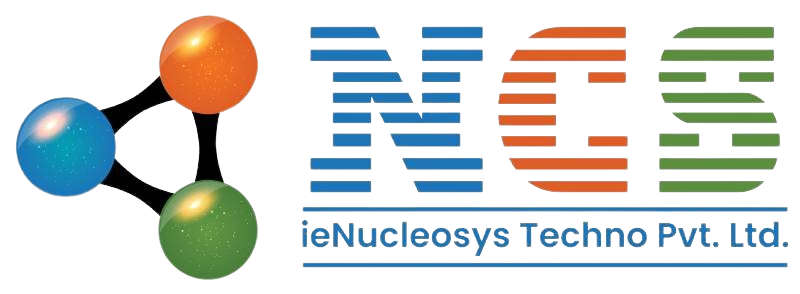Last Updated on November 6, 2025 by Nucleosystech
In today’s fast-paced digital landscape, having a creative website is no longer a luxury—it’s a necessity. Whether you’re a startup, a local business, or a global brand, your website often serves as the first impression potential customers have of you. A thoughtfully designed site can turn casual visitors into loyal clients and significantly boost your online credibility.
In this blog, we’ll explore what makes a website truly creative, why it matters in 2025, and how to design one that delivers both function and flair. From visuals to usability, a creative website blends aesthetics with strategy to give your brand a powerful online presence.
What Defines a Creative Website?
A creative website is more than just visually appealing—it’s a blend of innovative design, seamless navigation, and purposeful content. While creativity might be subjective, there are some universal elements that help websites stand out:
-
Unique visual identity (color scheme, typography, layout)
-
User-friendly navigation for smooth experiences
-
Interactive elements like animations, sliders, or hover effects
-
Mobile responsiveness for all device types
-
Compelling storytelling that reflects your brand voice
Creativity doesn’t mean sacrificing usability. In fact, the most successful websites merge design and function to engage users and guide them to take action.
Why Your Business Needs a Creative Website in 2025
1. Stronger Brand Identity
In a crowded digital market, differentiation is everything. A creative website tells your brand’s story, helping you stand out from competitors. Every visual and textual element reinforces your brand identity, leaving a lasting impression on your visitors.
2. Improved User Engagement
Web users have short attention spans. An innovative and interactive website keeps them engaged. Features like dynamic visuals, scroll effects, and custom illustrations captivate visitors, encouraging them to explore further.
3. Higher Conversion Rates
Creativity in design can improve functionality. A clear call-to-action (CTA), strategically placed buttons, and engaging product displays can lead to better conversion rates. Design that guides users through your sales funnel increases the likelihood of turning visits into sales.
4. Better SEO Performance
Search engines reward well-structured websites. While SEO depends heavily on technical elements, design also plays a role. Clean code, fast loading times, and mobile optimization—often present in creatively built websites—contribute to better search rankings.
Essential Elements of a Creative Website Design
To build a compelling digital experience, your website should include:
● Strategic Use of White Space
Spacing isn’t wasted real estate; it enhances readability and focuses the user’s attention where it matters. A clean, open design is modern and easy to navigate.
● Custom Visuals and Icons
Stock images can feel generic. Custom photography, illustrations, or branded icons add a unique touch and help tell your brand’s story in an authentic way.
● Consistent Brand Elements
Fonts, colors, and visual styles should remain consistent across all pages. This ensures a cohesive user experience and reinforces brand recognition.
● Optimized Performance
Slow websites turn users away. Creative sites should still prioritize speed through optimized images, minimal code, and efficient hosting.
Common Mistakes to Avoid in Creative Web Design
Even the most creative concepts can fail if not executed well. Here are pitfalls to avoid:
-
Overly complex navigation that confuses users
-
Flashy animations that slow down the site
-
Non-responsive design that performs poorly on mobile
-
Too many fonts or colors that dilute your message
-
Lack of CTAs or unclear conversion paths
Your website should not only impress—it should convert. Function must always accompany form.
Trends to Watch in Creative Website Design (2025)
The digital world is evolving, and so are user expectations. Watch for these trends when designing or revamping your site:
-
AI-powered personalization
-
Micro-interactions for feedback
-
Dark mode design
-
Minimalist layouts with bold visuals
-
Voice-activated search integration
These trends are not just aesthetic—they’re geared toward improving usability and engagement.
How to Start Building a Creative Website
If you’re starting from scratch or revamping an old site, follow these steps:
1. Identify Your Goals
Are you looking to sell products, showcase a portfolio, or generate leads? Your objective will shape your design and structure.
2. Work with Professional Designers
While DIY platforms exist, hiring professionals ensures that your creative website aligns with modern design practices, loads efficiently, and communicates your message effectively.
3. Focus on Content
Even the best design can’t make up for poor content. Use persuasive copywriting, include testimonials, and highlight unique value propositions.
4. Test and Iterate
Launch isn’t the end. Continuously test user behavior, tweak visuals, and refine copy to maximize performance.
Conclusion: Creativity Is the Competitive Edge
In a digital-first world, a creative website is your strongest marketing tool. It enhances your credibility, improves customer engagement, and drives growth. By balancing originality with functionality, your site can be both beautiful and effective.
If you’re serious about elevating your brand, it’s time to think beyond the basics. Invest in a custom web design that captures your essence and converts visitors into customers.

